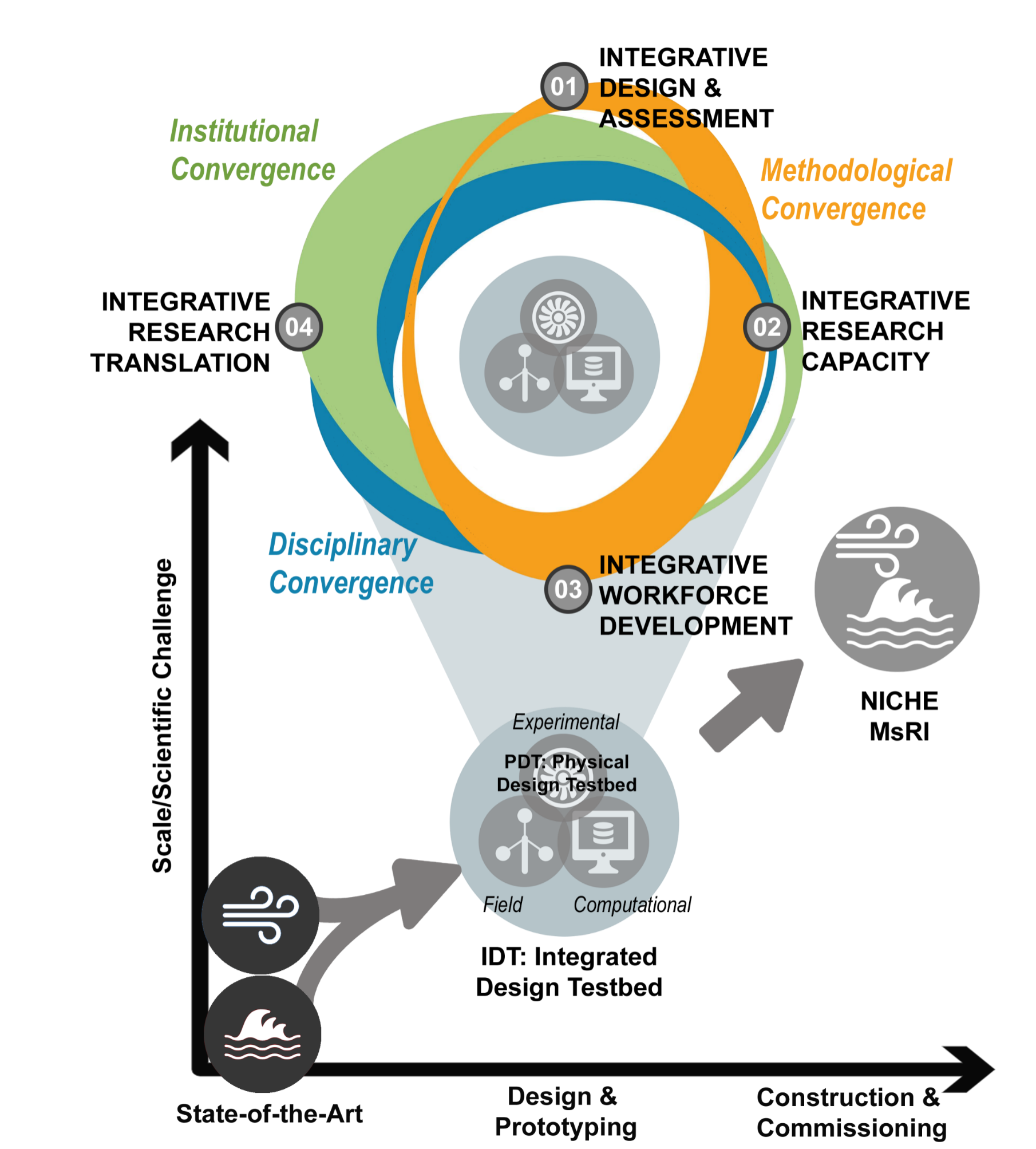NICHE
National Full-Scale Testing Infrastructure for Community Hardening in Extreme Wind, Surge, and Wave Events (NICHE)
The National Science Foundation (NSF) Mid-scale Research Infrastructure (MsRI) program has awarded a $12.8M four-year cooperative agreement (award no. 2131961) to design a national full-scale wind-wave-surge testing facility capable of generating wind speeds of up to 200 mph, combined with a water basin to simulate storm surge and wave action. The envisioned National Full-Scale Testing Infrastructure for Community Hardening in Extreme Wind, Surge, and Wave Events (NICHE) will support a broad range of researchers who seek to study the impact of extreme winds combined with storm surge and wave actions on civil infrastructure. NICHE responds to a pressing national imperative to promote more resilient communities by reducing losses, population displacement, and outmigration due to climate-driven hazards, enabling communities to thrive sustainably and equitably to improve quality of life. NICHE is a part of the NSF-supported Natural Hazards Engineering Research Infrastructure (NHERI) Network and will contribute to NSFs role in the National Windstorm Impact Reduction Program (NWIRP). Data produced by this project will be archived and made publicly available in the NHERI DesignSafe Data Depot.
Historically, investigations of windstorm impacts on civil infrastructure have engaged a trio of methodological approaches, i.e., field observations, physical experiments, and computational simulations. While considerable advances have been made in each area, none adequately capture the complex physics of structures subjected to interacting wind and coastal water hazards. The NICHE facility will address these limitations by a two-pronged approach: (1) it will integrate the use of field observations, physical experiments and computational simulations in the study of combined wind and coastal hazards and (2) in the process advance capabilities in each of these methodological domains beyond their current state-of-the-art. Specific to physical testing, while existing experimental facilitiessuch as those under the NHERI programcan simulate the impacts of any one of these hazards on civil infrastructure, the capability to advance our understanding of coupled hazards is lacking, thus limiting our ability to effectively design for their joint effects and validate computational models that capture their interactions. Existing facilities also lack the physical size and intensity to authentically recreate the catastrophic failures observed in real-world windstorms like hurricanes and to thereby assess the efficacy of potential mitigation solutions.
The NICHE facility will be designed to physically simulate coupled climate-driven hazards at the scales required to faithfully reproduce realistic vulnerabilities in the built environment. NICHE will test the impact of extreme winds combined with storm surge, waves, and currents on different types of civil infrastructure, including full-scale low-rise buildings, large-scale infrastructure systems, and scaled community models. Thus, the NICHE facility will enable the wind and coastal engineering research community to work together to address high-priority scientific questions arising from increasing storm risks on coastal infrastructure. These questions will be addressed through high-fidelity investigations in the three dimensions of the problem space: synoptic and non-synoptic wind hazards, coastal hazards (waves and storm surge), and the built environment, e.g., from individual structures to community scale. The impact of these hazards can be examined in isolation or jointly using NICHE.






